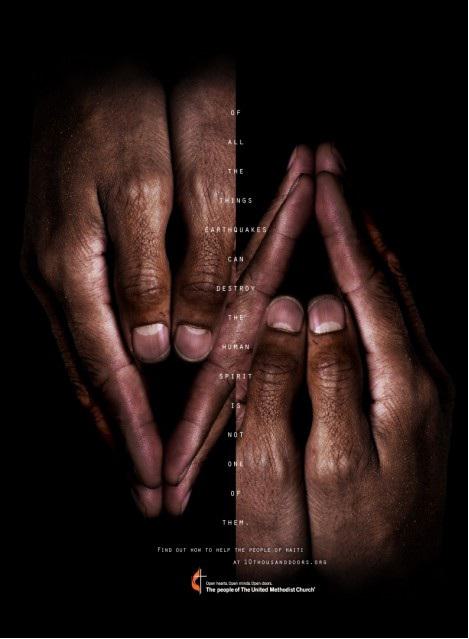Disaster fundraising at its worst
After the earthquake in Haiti, it didn’t take long for the bad fundraising messages to crawl out of the woodwork. Here’s an example of run-amok abstractionism, from the People of The United Methodist Church. I’m guessing that they had some help from an ad agency on this one. Who else could have screwed up such a simple and compelling message?
- Written by
- Jeff Brooks
- Added
- May 14, 2013

First, you will notice the astoundingly unreadable design. It’s as if they have deliberately thought of all of the things that reduce the readability of a text: all caps, sans serif font, reverse type, typing over an image, extra-wide leading… And decided to use them all in one layout.
But the stupidity doesn’t stop there.
While most normal humans understand and interact with other humans by looking at their faces, this ad seems to think connection happens when you put your face five inches away from somebody's hands.
‘Pores, wrinkles. They'll make people feel the connection.’
Furthermore, the clever splicing of the two photos makes it seem like we’re looking at some creepy, double-ended, free-floating fingers. Are they trying to startle us into action?
Of course, the poor design isn’t the worst thing. When you actually manage to interpret the copy, it reads like a bad haiku:
Of all the things earthquakes can destroy the human spirit is not one of them.
Never before have philosophical abstractions moved people into action. I wonder why they thought it would work this time. And why have they hidden the second call to action (which actually does make sense) at the very bottom of the page? Then, when you follow their suggested URL,10thousanddoors.org, you arrive at a webpage that is about lots of things, not just the disaster in Haiti. Their message doesn’t get any clearer or more concrete in their video either.
















